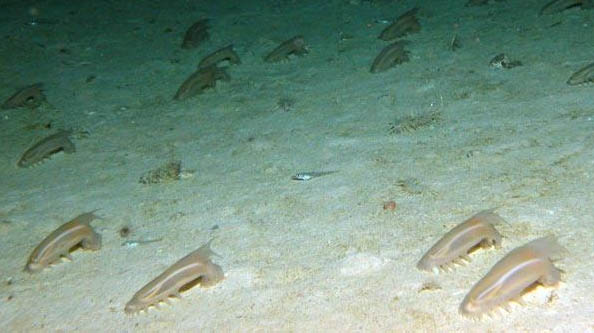
Boggling bioturbators, Batman. It’s a wild herd of holothurians. Run for yur lives! Elasipodid holothurians are a dominant component of the mobile invertebrate megafauna on the Porcupine Abyssal Plain, northeast Atlantic. They occur in high densities over large areas (Smith et al. 1997).
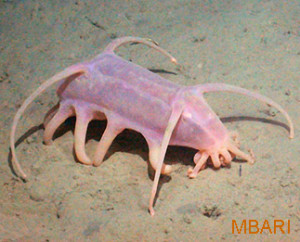 Yes, but, where are they going? They’re up to something, for sure, never found milling around.
Yes, but, where are they going? They’re up to something, for sure, never found milling around.
The images above and left are lifted from the awesome Abyssal image galleries at Bogleech.com, a website by Jonathan Wojcik about insects, parasites, monsters and peculiar things of every sort. Go there to learn more. For holothurians in action (ie spilling their guts), stop by the Echinoblog.
Links to original source material provided below.
Citations:
Image #2 – Scotoplanes globosa from work by Ken Smith at MBARI.
SMITH, A., MATTHIOPOULOS, J., & PRIEDE, I. (1997). Areal coverage of the ocean floor by the deep-sea elasipodid holothurian Oneirophanta mutabilis: estimates using systematic, random and directional search strategy simulations Deep Sea Research Part I: Oceanographic Research Papers, 44 (3), 477-486 DOI: 10.1016/S0967-0637(96)00112-4


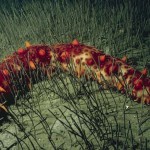

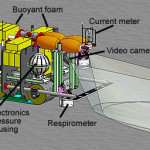
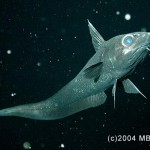
That’s frikkin awesome! Giddy up holothurian!
I just wanted to mention that the second sea cucumber image is an image of Scotoplanes globosa from the MBARI web site, specifically an article on Ken Smith’s work at Station M, off Point Conception (http://www.mbari.org/news/homepage/2007/deepchange.html). Our ROVs have photographed quite a few herds of sea cucumbers “galloping” across the sea floor, perhaps following some chemosensory gradient?
Also, It’s a shame that the guy who runs bogleech.com is completely clueless about crediting photos such as this one. He has lots of cool images (many copyrighted) taken from many many web sites, and has credits and links for almost none of them. We hope you you folks at Deep-Sea News can do better…
Thank you, Kim, we rely on our readers for this kind information when its not readily available from secondary (tertiary?) sources. For what its worth, Bogleech.com notes at the bottom he’s asking viewers to advise him about credits. In his defense, young people are fascinated by images like these, but not fully aware of how and where to find the originals. We need to build these bridges. Again, thanks for your help.
If its alright with MBARI, I’ll repost the image with credits “burned in”, and cite the image with the references at the bottom.
It’s like the sea pigs on their endless march across the abyssal plains. Must be someting seacucumbers do… I’d love to know what the fish in the middle is!
I honestly never intended to be using copyrighted images without full permission and credit, but could find very few on their original sources. I always went through wikimedia commons and flickr for resources, which get branded as public domain or just completely inaccurate information. More than once I’ve requested and received “permission” to use images that turned out to belong to someone else entirely.
Deep sea creatures suffer HEAVY circulation like this because the average person unfortunately finds them “creepy.”
A lot of the photos I selected for bogleech specifically because they were being passed around in chat rooms and image boards at the time as “shock” pictures and I wanted to explain them more appropriately. As pointed out, I always had requests out for source information, and this is honestly the VERY first time that anybody has fulfilled that request. I have always wanted to know who to credit, and would appreciate any more information I can get on the original photographers.
As soon as I was informed, I was up much of last night running searches through MBARI and updating my html, trying to credit everything I could find that I was using. I no doubt missed plenty. If I can still use any and figure all of them out I’d like to add information directly to them as Peter did here.
Thanks Jonathon. The problem of orphaned images is often underestimated.
I try to follow the old proverb “if you love something set it free… it will come back to you”. However, I’m not trying to support a research institute, or make a living off images. In effect, good distribution of freely available low res images is one way of advertising that higher resolution images may exist.
One thing we can all do to address the problem of orphaned images and to benefit taxonomy at the same time is to name image files by species and by origin, e.g. scotoplanes_globosa_MBARI.JPG. This benefits the user and the search engines, taxonomically and institutionally.